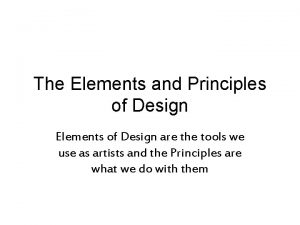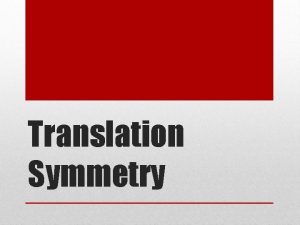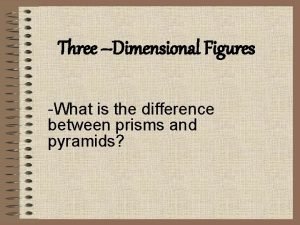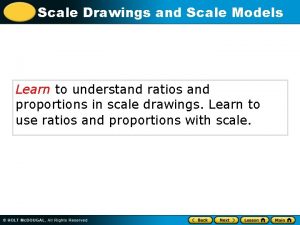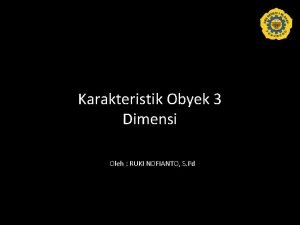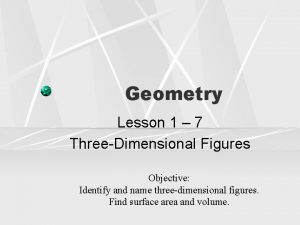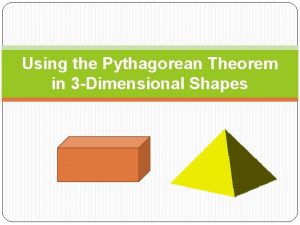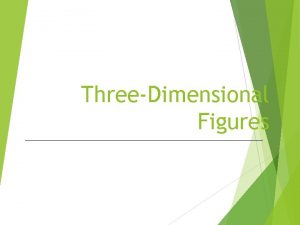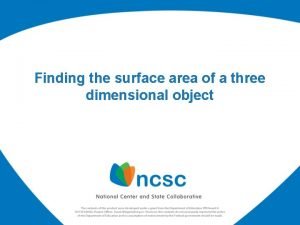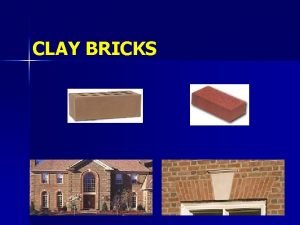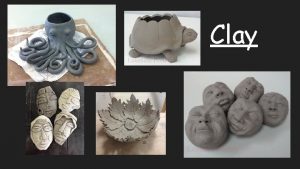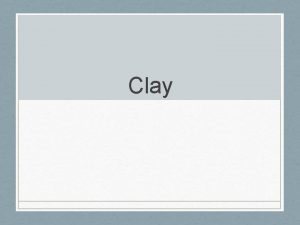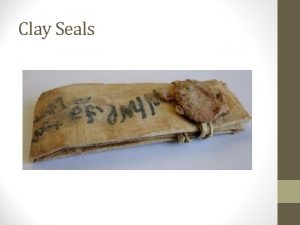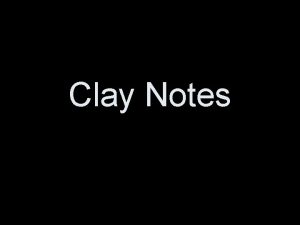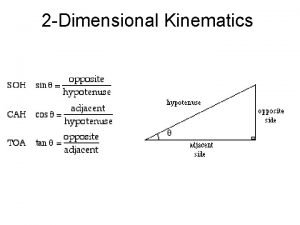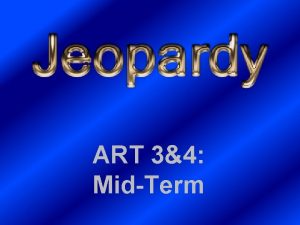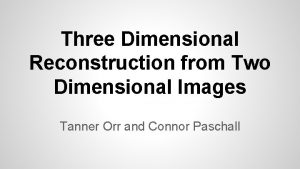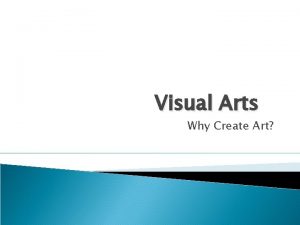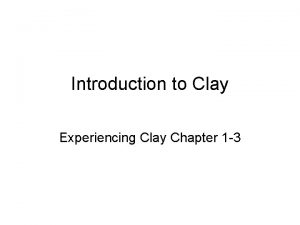Three Dimensional Design Using Clay to create ART
















- Slides: 16

Three Dimensional Design Using Clay to create ART.

Designing in the “Round” 3 D artists get to consider ALL sides of their artwork when designing their piece because viewers interact with the art within an actual, physical space Artists don’t only consider the illusion of space, but ACTUAL space!

3 -D artists have many materials to chose from paper, metal, plaster, plastic, stone, fibers, wood, natural elements…. Paper Sculpture by Ferry Staverman Michelangelo’s “David” Sculpture made of disposable cupcake tins by Tara Donavan

WE will use CLAY!!

CLAY…Important Info: Clay is a natural material of earth that becomes plastic (flexible) when moistened and waterproof when fired to very high temperatures in a kiln. Examples of fired clay are brick, tile and pottery. We will be working with a stoneware clay called Whitestone.

A KILN is a furnace that heats to extremely high temperatures—over 2000 degrees. It transforms and hardens the clay.

THE 6 STAGES OF CLAY: Clay TRANSFORMS over 6 stages It’s important to understand how you can work with clay at each stage. Certain actions can ONLY be done during each stage. Clay can be dissolved in water until it is fired in a kiln.

The 6 Stages of Clay: 1. SLIP: Clay thinned with water to create a thick liquid. (CLAY GLUE) Slip is used on scored areas to bind soft pieces of clay together. 2. PLASTIC: Clay that is wet enough to work with: It will bend and shape into any form. It is FLEXIBLE. 3. LEATHER HARD: this is the stage midway between wet and dry. The clay will be stiff enough to support itself, but pliable to be bent and worked with.

6 stages continued. . 4. GREENWARE/BONE DRY: ceramic ware that is DRY but has not been fired. THIS IS THE MOST FRAGILE STAGE!! 5. BISQUE: fired pottery that is unglazed. It can no longer be recycled or dissolved by water. 6. GLAZE: one way to color pottery; the pottery must be fired again after being glazed; glazing makes the pottery safe for food.

Key Characteristics of CLAY: Clay SHRINKS as it dries Once clay dries beyond the leather hard stage YOU CANNOT ADD CLAY TO IT. It will not hold together. Clay SHRINKS in the kiln IF pieces are not joined together with slip and scoring, it will fall apart during firing. Clay that has NOT been fired is NOT waterproof OR food safe. Clay is waterproof and/or food safe ONLY when the correct type of GLAZE has been applied AND fired a second time.

SCULPTURAL TECHNIQUES RELIEF: A type of sculpture which is not freestanding; objects in the relief project from a background.

SCULPUTRAL TECHNIQUES. CONT’D ADDITIVE: A method of making sculpture where you are ADDING parts together to make a whole.

SCULPTURAL TECHNIQUES CONT’D SUBTRACTIVE: A method of making sculpture where you REMOVE parts to “reveal” the form.

CONSTRUCTION TECHNIQUES SLAB: A piece of clay that has been evenly flattened by means of a rolling pin or a slab roller. SCORE: Scratching grooves or lines into surfaces of clay pieces that will be joined together. Scoring helps the pieces of clay to bond together.

DECORATING METHODS INCISE: Using a needle tool or other pointed tool to “draw” into your clay. (Be careful not to go all the way through!) TEXTURE: An artwork’s actual or implied surface quality, such as rough, smooth, or soft.

DECORATING METHODS CONTINUED… CARVE: To remove an entire area of the surface of the clay leaving a recessed space. (This also does not go all the way through the clay) APPLIQUE: A decorative technique where flat clay shapes are attached to the clay project using the “slip and score” technique. PIERCE: Using a sharp tool to create an opening in the clay that you can see through.
 Three dimensional space in art
Three dimensional space in art Principles hair design
Principles hair design Circular motion is one dimensional or two dimensional
Circular motion is one dimensional or two dimensional Draw a motif and create a design using translation symmetry
Draw a motif and create a design using translation symmetry Jika noel(create(q)) adalah 0 maka front(create(q)) adalah
Jika noel(create(q)) adalah 0 maka front(create(q)) adalah How to calculate ml/hr
How to calculate ml/hr 1-6 two dimensional figures
1-6 two dimensional figures Thése
Thése Three dimensional figures definition
Three dimensional figures definition 7-7 scale drawings and models
7-7 scale drawings and models Salah satu karakteristik obyek 3 dimensi adalah
Salah satu karakteristik obyek 3 dimensi adalah A boundless 3 dimensional set of all points
A boundless 3 dimensional set of all points 1-7 practice three-dimensional figures
1-7 practice three-dimensional figures Pythagoras theorem for 3d shapes
Pythagoras theorem for 3d shapes How many vertices has a pyramid
How many vertices has a pyramid Energy of particle in a box
Energy of particle in a box The total area of the surface of a three dimensional object
The total area of the surface of a three dimensional object
